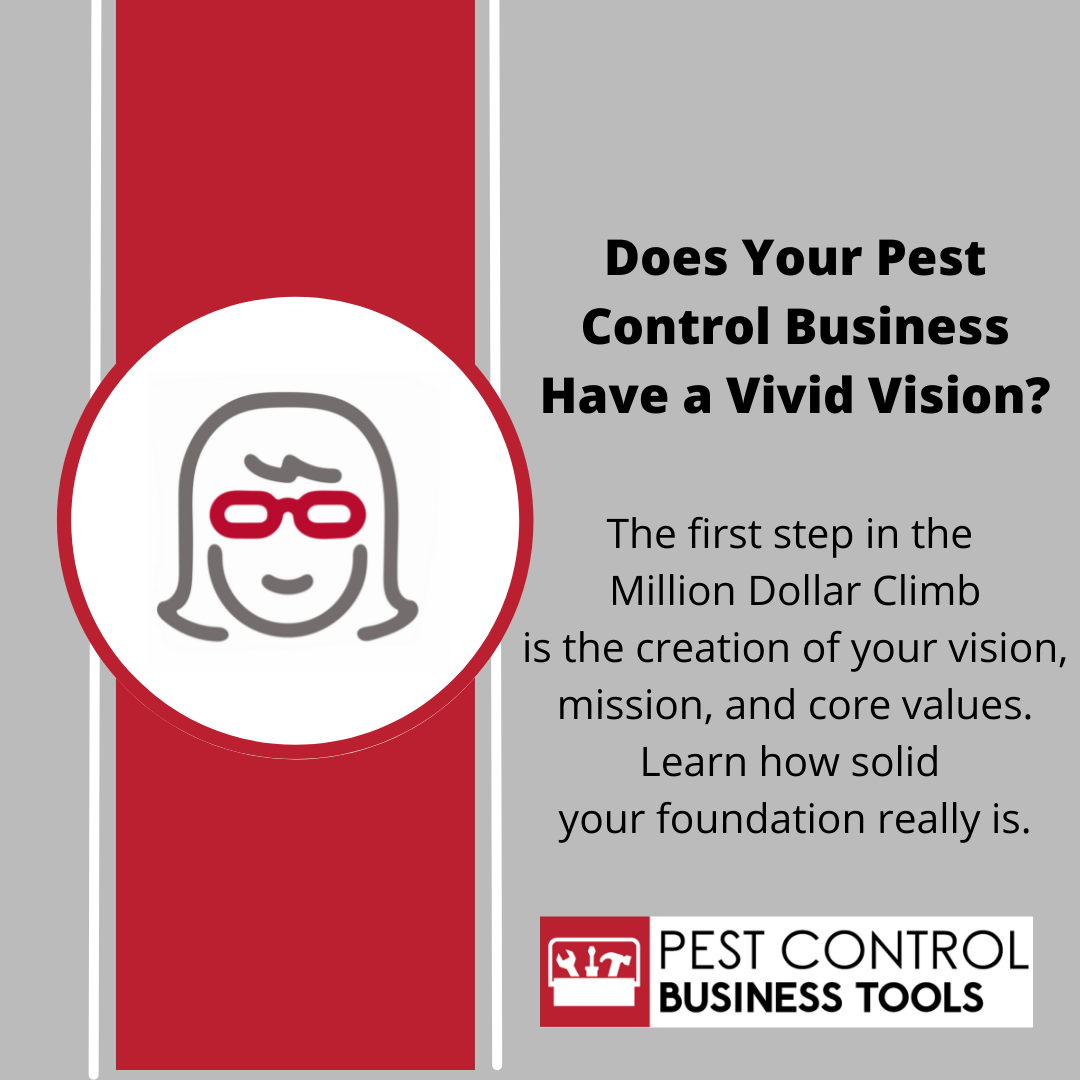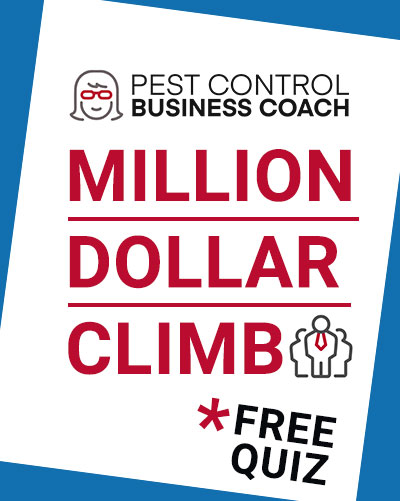


If someone asked you to describe your pest control business’ vision, mission, and core values, what would you say? Would it be an easy or complicated answer?
More importantly, does the way your company operates daily live up to that answer?
The first step in the Million Dollar Climb Challenge focuses on the very foundation of your business—your vision, mission, and core values. Chances are that your answer to the opening question falls into one of four categories:
In the following sections, we will delve into each of these answers to help you pinpoint where you are now and what steps to take next. After all, perfecting your vision, mission, and core values is an integral part of not just solidifying the foundation of your business but also creating a blueprint from which you and your team can build harmoniously.
| “I don’t think about a company mission or vision and values much. I’m out here getting actual work done, and the work speaks for itself.” |
If you’re already running your businesses and getting work done, you’re on the right track.
Chances are, you know what mission and vision statements look like. And core values, those are givens (right?)—outlining them can feel like an awkward task—so, is creating that outline a necessity? Or does it all sound like a lot of busy work?
According to National Geographic, The Great Pyramid, which is the largest of the Pyramids of Giza, is the only Great Wonder of the Seven Wonders of the Ancient World that still stands today. It was engineered over 4,000 years ago. The colossal build was originally 482 feet from base to peak. It took 20 years and some 2.3 million stone blocks to construct.
Would it have been possible to build without a clear vision and precise mission? Not likely.
Every great construct has a mastermind, and that mastermind has ideas—just like you.
Think back to why you started your business and the goals you first had in mind. That’s where your vision started. Now, whether you’re putting in the work and running it or just getting it off the ground, it’s time to take that vision further. It’s time to use it to shape your future, which brings us to the second step.
| “I know my business vision, mission, and core values are important, but I have no idea where to begin.” |
Textbooks and recipes have two things in common; they make great guides but lack improvisation.
A little reality and some spice turn textbook and recipe guides into the makings of greatness. Likewise, your company vision, which sparks your mission and incorporates core values, should make up the guiding documents that drive everything, from day-to-day operations to growth.
Start by envisioning.
Instead of toiling over a short, written statement that seems to sum up your current vision, focus on envisioning your business three years from now. Picture walking through it, as if you’re visiting, and tour everything—every department, every office. Your job is to capture all the details. What does it look like? What does it feel like? What has been accomplished?
The idea is to create was Cameron Herold calls a vivid vision; a vision of your future business so detailed that it creates a snapshot. Once you have this, you can use it to create your company vision and expand to outlining both your mission and core values—the blueprints to making your vision a reality. Now comes the third step.
| “I have a clear vision, mission, and core values, but they’re not so clear to my team.” |
Going back to the Great Pyramid, what might have happened if the project didn’t have a blueprint? Given the timespan of the build, no blueprint would have been catastrophic. It would never have survived changes in people or the passage of time.
Likewise, your business needs visible blueprints. Once you have a rough draft (from Step 2) that creates a snapshot of what your business will look like in the future, it’s time to make it visible.
Visibility happens in steps. Your rough draft will be delegated out to someone who can help you transform it into a well-written, inspirational cornerstone—something you will then incorporate into everything from your training manual and company handbook to press releases and marketing. The end goal will be to create guiding documents that showcase your company’s vision, mission, and core values. These will serve two distinct purposes:
Once these guiding documents are visible, you will naturally move on to step four.
| “Our vision, mission, and core values define us and our culture.” |
Your pest control business starts with a vision, which grows to include a mission. The core values that you hold dear will dominate the way your company culture evolves. These three, sometimes seemingly trivial, documents will guide everything internally and externally.
Just like handing an architect a picture of your dream home will allow them to draft all the subtasks that lead to the day you move into your newly built home, handing your team your company vision, mission, and core values will be what leads to walking into your newly built business three years from today. How closely that business will match your vision hinges on the time you spend now ensuring it is as clear and vivid as possible.
Nothing that lasts was built without a plan, and a plan starts with a vision. What’s yours?
Since 2010, I’ve helped many Pest Control business owners, just like you, overcome being stressed out and begin to love their business again.

Download our FREE QUIZ resource. See where you ARE and where you want to GET TO. Begin your journey to success in your pest control business, TODAY!